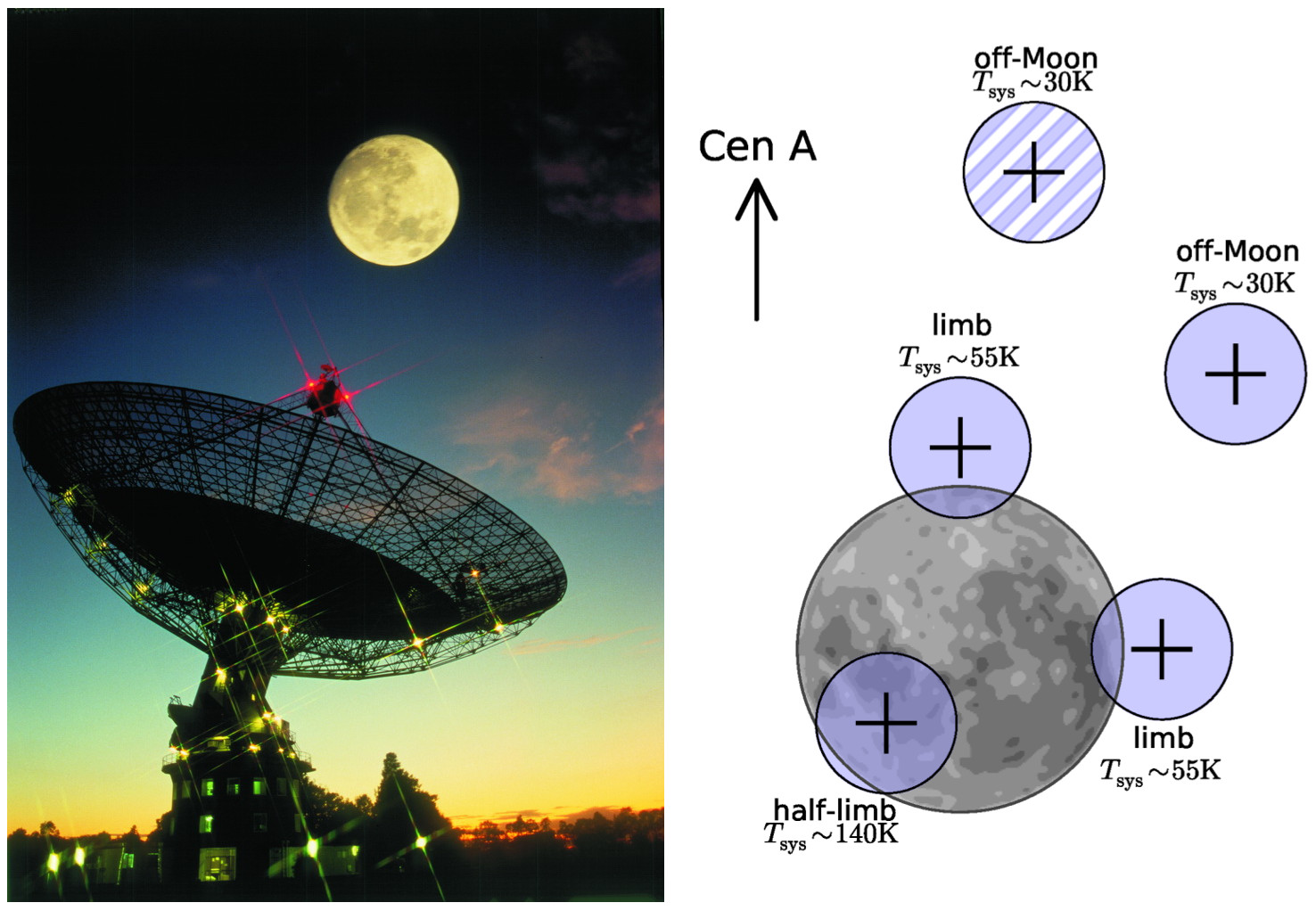| High-energy cosmic rays and neutrinos, when
they hit the moon, should produce a pulse of radio waves that can be detected
from earth. A series of experiments has searched for these pulses with a range
of radio telescopes. None of them have detected a pulse, which excludes some
astrophysical models of the high-energy neutrino flux, and the more sensitive
experiments are now close to detecting the top end of the cosmic-ray spectrum.
The photo on the left was taken during the first such experiment with the
Parkes telescope, in 1995. (Image credit: Seth Shostak.) The figure on the
right shows the positions of the beams on the moon during the most recent
experiment, using the Parkes 21 cm multibeam receiver
(Bray et al. 2015
).
|
